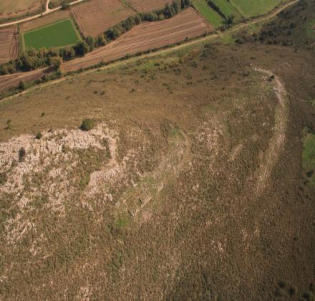Necromanteio

Fig. 2 The underground hall of Nekromanteion Location Mesopotamos Source Ministry of Culture.
«The rights to the depicted monument belong to the Ministry of Culture and Sports (Law 3028/2002)”. “The monument {Archaelogical Site of Nekromanteion } falls under the competence of the Ephorate of Antiquities of Preveza”. «Ministry of Culture and Sports – Organization for the Management and Development of Cultural Resources (Hellenic Ministry of Culture and Sports – Hellenic Organization of Cultural Resources Development)».
The landmark of Mesopotamos is the Nekromanteio ( dead oracle ) of Acheron or “Nekuomanteio’ which is the most famous oracle of ancient times.
It is located on top of a hill 82m of “Xylokastrou”, in the village of 3000 years, it is dated in Mycenaean years 14-13 BC, as the first reports were in Omyrou Odusseia Rapsody L’ << ἔνθα μὲν εἰς Ἀχέροντα Πυριφλεγέθων τε ῥέουσιν Κώκυτός θ᾿, ὃς δὴ Στυγὸς ὕδατός ἐστιν ἀπορρώξ, πέτρη τε ξύνεσίς τε δύω ποταμών εριδούπων>>.
“There, Pyrifleghetonas in Acheron stream rolls with Kokyto that falls from Styga, and the rock where the two rivers mix heavily.”


 Ελληνικά
Ελληνικά Deutsch
Deutsch Italiano
Italiano Русский
Русский Türkçe
Türkçe العربية
العربية

